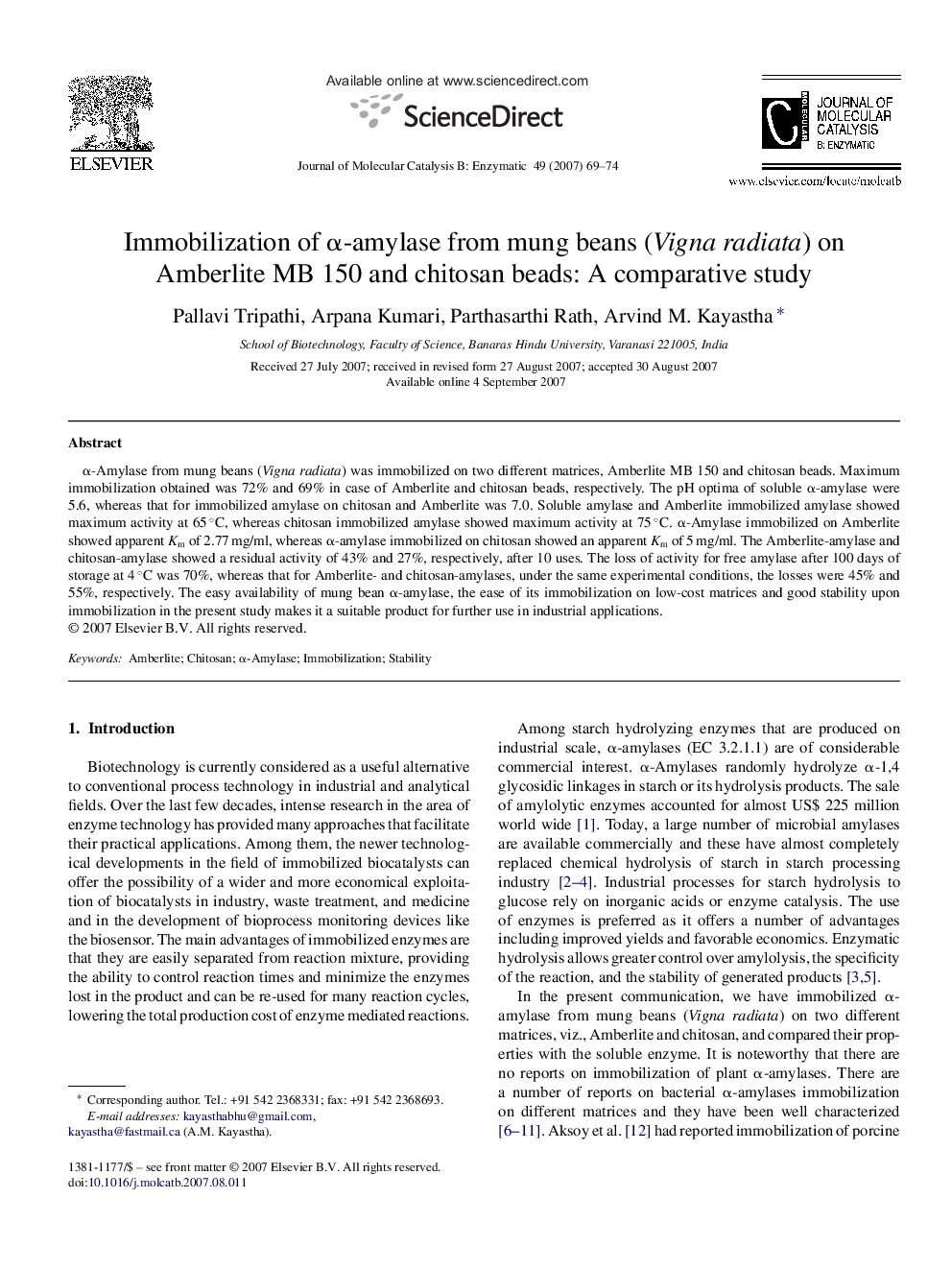| Article ID | Journal | Published Year | Pages | File Type |
|---|---|---|---|---|
| 71158 | Journal of Molecular Catalysis B: Enzymatic | 2007 | 6 Pages |
α-Amylase from mung beans (Vigna radiata) was immobilized on two different matrices, Amberlite MB 150 and chitosan beads. Maximum immobilization obtained was 72% and 69% in case of Amberlite and chitosan beads, respectively. The pH optima of soluble α-amylase were 5.6, whereas that for immobilized amylase on chitosan and Amberlite was 7.0. Soluble amylase and Amberlite immobilized amylase showed maximum activity at 65 °C, whereas chitosan immobilized amylase showed maximum activity at 75 °C. α-Amylase immobilized on Amberlite showed apparent Km of 2.77 mg/ml, whereas α-amylase immobilized on chitosan showed an apparent Km of 5 mg/ml. The Amberlite-amylase and chitosan-amylase showed a residual activity of 43% and 27%, respectively, after 10 uses. The loss of activity for free amylase after 100 days of storage at 4 °C was 70%, whereas that for Amberlite- and chitosan-amylases, under the same experimental conditions, the losses were 45% and 55%, respectively. The easy availability of mung bean α-amylase, the ease of its immobilization on low-cost matrices and good stability upon immobilization in the present study makes it a suitable product for further use in industrial applications.
